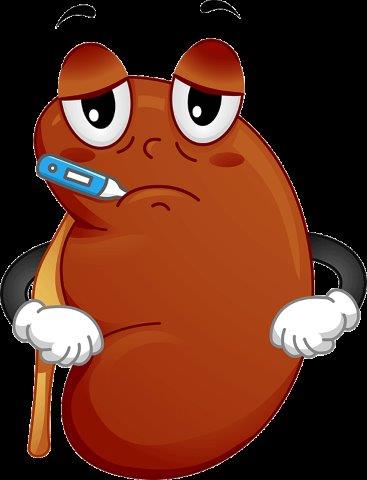Dangerously High Temperatures can be Harmful to the Body
July 26th, 2023 Experts warn that people need to be careful in this summer’s high temperatures as they could impact people’s health.
Experts warn that people need to be careful in this summer’s high temperatures as they could impact people’s health.
Heat and Your Health
What makes the intense heat so deadly is that a person often has disruptions to the cooling mechanisms of the body—such as the brain’s hypothalamus (which regulates body temperature) that prevents them from sweating to cool off.
A person’s normal body temperature typically ranges from 97F to 99F. Heatstroke occurs when the body temperature is 104F or higher.
Heatstroke can cause severe symptoms, including changes in mental status, coma and seizures.
A milder form of heat-related illness, known as heat exhaustion, can cause headache, nausea or dizziness.
It is not just your physical health that heat can affect, it is your mental health as well. It affects:
- Ability to sleep: Poor sleep is associated with all types of accidents.
- Cognition: The ability to think clearly, make decisions, communicate well, take protective actions.
- Delayed memory and recall
- Increased irritability and frustration
- Increased rate of and risk for violence
- Shorter attention span
- Taking longer than usual to complete tasks
Warning Signs
At triple-digit temperatures, the first symptoms of heat exposure can happen in 15 minutes. Early symptoms can include:
- Dizziness
- Nausea
- Shortness of breath
What IAA has to Say
Insurance Administrator of America wants to make sure you are keeping cool in this hot weather. IAA hopes you have a fun and safe summer.
Kidney Stones on the Rise in Children and Teens
July 19th, 2023 Incidences of kidney stones are rising among children and teens, especially young girls.
Incidences of kidney stones are rising among children and teens, especially young girls.
New Cases of Kidney Stones
Kidney stones, hard deposits of minerals and salts that can get caught in the urinary tract, are now occurring in younger people, particularly among teenage girls, new data shows.
Kidney stones (also known as nephrolithiasis) are a metabolic disorder, occurring when minerals, such as calcium, oxalate and phosphorus accumulate in urine and form hard yellowish crystals. Some stones make their way out of the urinary tract with no issue, but others can get stuck, blocking the flow of urine and causing severe pain and bleeding.
While unclear as to why this is happening, experts speculate that a combination of factors are to blame, including diets high in ultra processed foods, increased use of antibiotics early in life, and climate change causing more cases of dehydration.
Research published in the “Clinical Journal of the American Society of Nephrology,” found that the incidence of kidney stone disease rose 16 percent from 1997 to 2012 with 15 to 19-year-olds experiencing the greatest increase within this age group. Kidney stone incidence was 52 percent higher among girls and women.
Experts believe that children’s worsening diets may play a role. High amounts of sodium from potato chips, sports drinks and packaged meals can force extra minerals into the urine that can clump into kidney stones. It is especially likely if the child does not drink enough water or drinks too many sweetened beverages high in corn syrup.
Hotter summers may also cause more kidney stones. The hotter and more humid it is, the more you sweat and less you urinate, allowing minerals to bond in the kidneys and urinary tract. Children are especially vulnerable to heat.
Children who develop a stone have about a 50 percent chance of developing another one within five to seven years, according to the National Kidney Foundation.
Kidney Stone Symptoms
About 10 percent of people in the United States will have a kidney stone at some point in their lives, according to the National Kidney Foundation.
Symptoms of kidney stones can include:
- A consistent need to urinate
- Cloudy or foul-smelling urine
- Irritability, especially in younger children
- Pink, brown or red blood in the urine
Symptoms can sometimes be “more nonspecific” in children, especially younger ones.
What IAA has to Say
Insurance Administrator of America thinks it is important to stay on top of the world of health. Remember, with IAA one call does it all.
Caffeine Alone may not Provide Daily Kickstart
July 12th, 2023 A new study argues that it is not caffeine alone that provides that much needed daily jolt.
A new study argues that it is not caffeine alone that provides that much needed daily jolt.
The Act of Drinking Coffee
Caffeine by itself does activate some regions of the brain associated with readiness to tackle tasks, researchers said. But the act of drinking coffee produced a more comprehensive response in the brain, results of a new study showed.
People who took a basic caffeine pill did not experience the same sort of brain boost they did from sipping a cup of coffee, according to the brain scans.
For the study, researchers recruited a group of people who typically drink at least one cup of coffee daily. They asked them to refrain from eating or drinking caffeinated beverages for at least three hours before going into the lab.
Researchers then performed two MRI scans, one before and another a half-hour after the participant took either a caffeine pill or drank a cup of coffee. During the MRI scans, the participants were asked to relax and let their minds wander.
The scientists expected that the participants would experience a higher integration of networks that are linked to the pre-frontal cortex (associated with executive memory) and the default mode network (which is involved in introspection and self-reflection processes).
The connectivity of the default mode network decreased both after drinking coffee and after taking caffeine which indicates that consuming either made people more prepared to move from resting to working on tasks, the researchers said. But only drinking coffee increased connectivity in parts of the brain associated with working memory, cognitive control and goal-oriented behavior, the results showed.
So, if a person wants to feel more than just alert, caffeine alone will not do the trick, the researchers concluded. The experience of a cup of coffee is essential.
The study was published in “Behavioral Neuroscience.”
Too Much Caffeine?
Signs that you have had too much coffee include:
- Agitation
- Dehydration
- Dizziness
- Headaches
- Shaking
- Trouble sleeping
Four out of five adults consume coffee daily.
What IAA has to Say
Insurance Administrator of America knows you enjoy that morning cup of java, just make sure not to go overboard! Remember, with IAA one call does it all.
Cases of Diabetes Could Reach Billions by 2050
July 5th, 2023 More than 500 million people of all ages are living with diabetes and the number of cases worldwide is projected to hit 1.3 billion in the next 30 years.
More than 500 million people of all ages are living with diabetes and the number of cases worldwide is projected to hit 1.3 billion in the next 30 years.
Diabetes Worldwide
Worldwide, six percent of people have diabetes, making it one of the top 10 leading causes of death and disability, the new study found.
In every country, the disease is commonly seen in people 65 and older, with a prevalence rate of more than 20 percent. The highest rate was 24 percent for 75- to 79-year-olds. In all, 96 percent of diabetes cases are type 2 diabetes.
Obesity was the primary risk, accounting for 52 percent of disability and premature death, followed by poor diet, environmental and occupational risks, smoking, inactivity, and alcohol use, the researchers found.
The findings were published in “The Lancet.”
Preventing Type 2 Diabetes
Lifestyle changes can help prevent the onset of type 2 diabetes:
- Lose extra weight: Losing weight reduces the risk of diabetes. The American Diabetes Association recommends that people with prediabetes lose at least seven to 10 percent of their body weight with changes in exercise and diet.
- Be more physically active
- Eat healthy, plant-based foods: Plants provide vitamins, minerals and carbohydrates in your diet. Avoid foods that are “bad carbohydrates,” those high in sugar with little fiber or nutrients.
- Eat healthy fats: Fatty foods are high in calories and should be eaten in moderation. To help lose and manage weight, your diet should include a variety of foods with unsaturated fats, sometimes called “good fats.”
It is also important to skip fad diets and make healthier choices. Many fad diets may help you lose weight. There is little research about the long-term benefits and their benefits in preventing diabetes.
What IAA has to Say
Insurance Administrator of America wants you and your family to take the time to learn about preventing diabetes. IAA does not want anyone to become a part of a statistic.
Olympian’s Death Sheds Light on Maternal Mortality Crisis
June 28th, 2023
What is Eclampsia?
Tori Bowie American track and field champion died of pregnancy complications that may have included eclampsia, according to the newly released autopsy report.
Eclampsia is when a person develops seizures during pregnancy. The biggest risk factor for eclampsia is preeclampsia, which is when a person who’s pregnant has high blood pressure and protein in their urine.
Eclampsia affects less than three percent of people with preeclampsia, according to the Cleveland Clinic. It typically occurs after the 20th week of pregnancy.
Preeclampsia stresses the heart and can cause fluid buildup in the lungs. The stress on circulation can affect blood supply in the placenta and impair the liver and kidneys. High protein levels in the urine indicate kidney dysfunction. Left untreated, eclampsia seizures can occur which can result in brain damage, coma and possible death for the mother and fetus, the Centers for Disease Control and Prevention (CDC) say.
Maternal Deaths in the U.S.
The number of women who die during or shortly after childbirth in the U.S. is higher than in any other developed nation.
Heart disease and stroke cause the most deaths overall in pregnancy, and after, according to the CDC, which estimates these complications account for more than 34 percent of pregnancy-related deaths.
Problems that increase the risk of stroke during pregnancy and delivery include high blood pressure during pregnancy, preeclampsia, gestational diabetes, and blood clots.
What IAA has to Say
Insurance Administrator of America is here to keep informed on the world of health. Keep tuning into IAA’s blog to learn more about current health topics.
